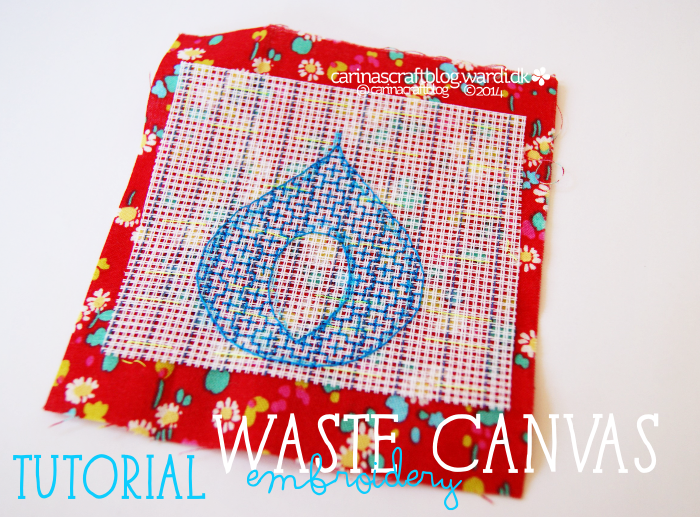
I don’t know if you have tried waste canvas yet? It is very handy when you want to do counted work, cross stitch or blackwork e.g., on fabric that isn’t very good for this kind of work. For example, felt or jersey fabric, like you find in t-shirts.
Waste canvas comes in different counts, like you find for regular cross stitch fabric. The count refers to how many threads or blocks are in an inch of the fabric. 14 count means there are 14 threads, 18 count means there are 18 and so on. The higher the number, the smaller the stitches basically.
To try this, you will need the following:
• Waste canvas, you should be able to find this with cross stitch fabric in your local craft shop. Otherwise, have a look online. I used 14 count, I like that it’s still fairly large, but maybe you want to give 18 count a go.
• Fabric, try it with felt, for example. Or maybe some quilting cotton as I have used in my example.
• A normal embroidery needle, not a cross stitch needle. You need to pierce through the fabric.
• Embroidery floss, I used DMC, but use whatever you have in your stash.
• Sewing thread in a colour that isn’t white.
• Water soluble pen or a regular pencil.
• Embroidery scissors and small tweezers.
First, prep your embroidery.
Cut a piece of waste canvas, mine was about 4″x4″ square (10 x 10cm), but the size isn’t terribly important, it just needs to be large enough for your embroidery.
Cut a piece of fabric that is a little bit larger than the waste canvas.
Baste the waste canvas on the right side of the fabric.
If you are stitching a cross stitch pattern, simply start stitching. I prefer starting in the middle, but start wherever feels most comfortable for you.
If you are filling a shape with blackwork (could be cross stitch, too, I guess!), draw the shape with the soluble pen.
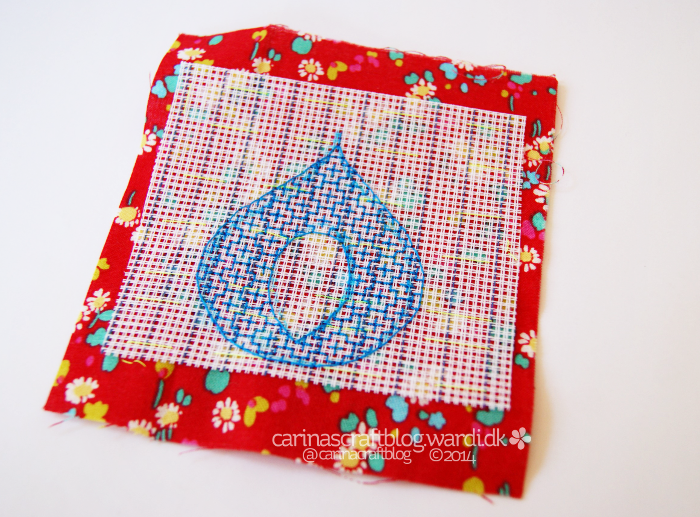
Fill the shape with stitches.
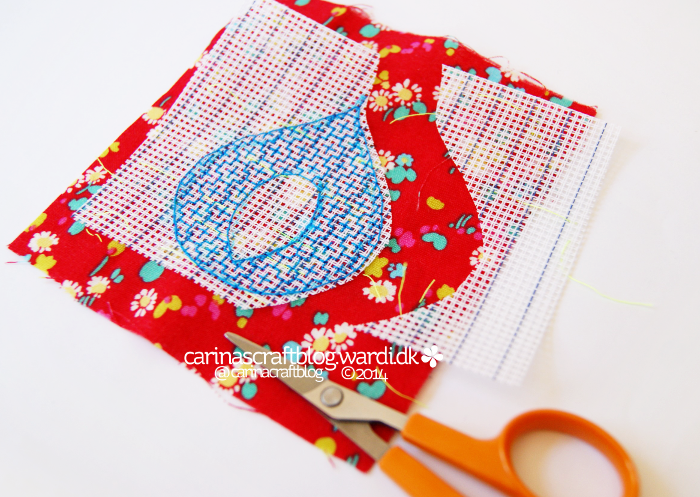
When the stitching is done, cut away as much of the waste canvas as you can without actually cutting into it. Also cut away as much of the basting thread as you can.
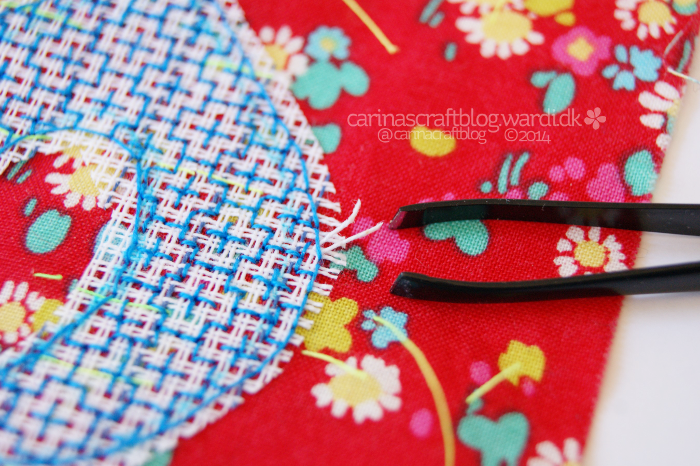
With the tweezers, start carefully pulling away some of the waste canvas threads.
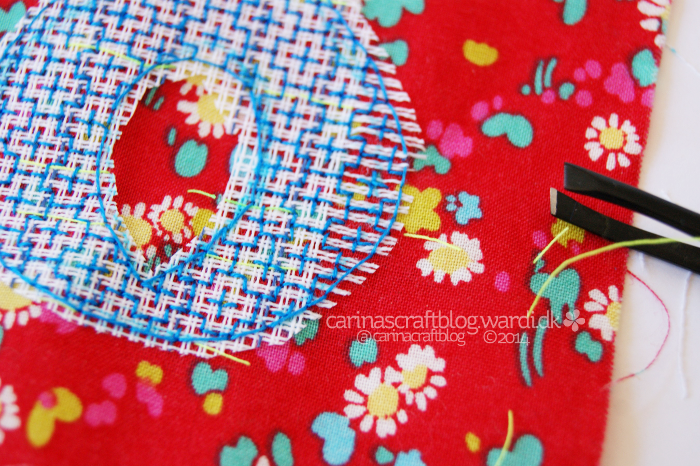
Once you have loosened some in one direction, it will be easier to pull them out in the other direction.
Pull at the threads gingerly, yes you can do that. But do experiment, Be careful at first and then gradually apply more force. Obviously you don’t want to pull so hard that you ruin your embroidery.
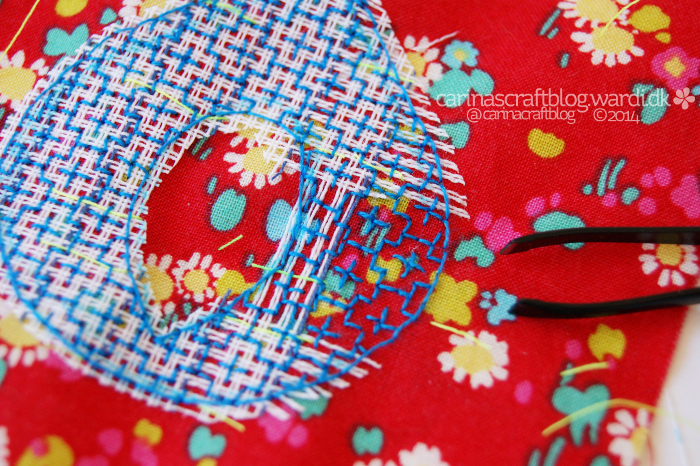
If you have fairly long threads of waste canvas it can be a good idea to cut through them here and there to make it easier to pull them out. But be careful that you don’t cut into your embroidery of course.
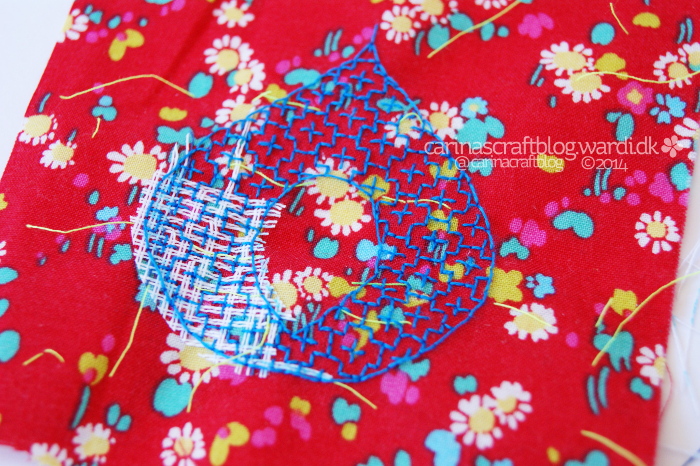
The more threads you pull out, the easier and quicker it will be to pull out the rest.
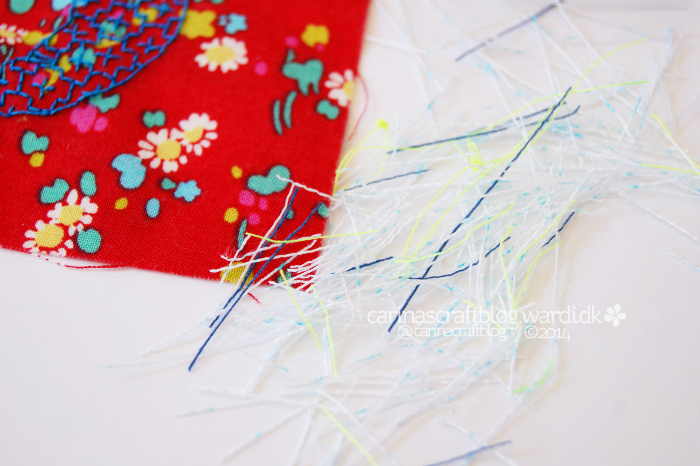
That’s why it’s called waste canvas; you can’t reuse this stuff, sorry. ;-)
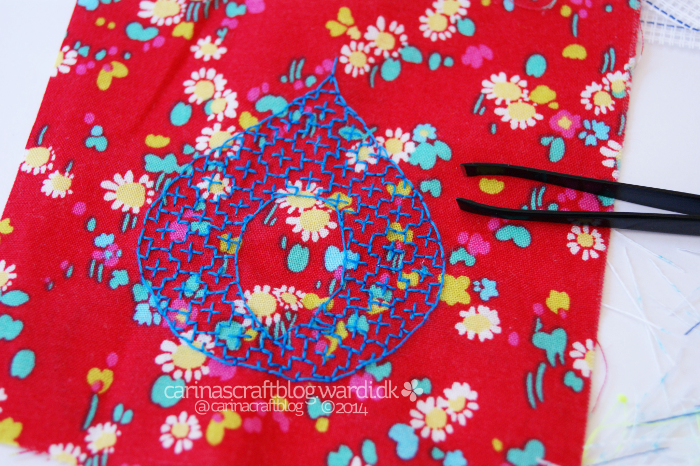
Waste canvas all removed, awesome! If you used a water soluble pen, you might want to give the fabric a quick rinse. Especially if you’re using a light colour fabric where the pen may have seeped through the waste canvas.
And then you can use the embroidery for your intended project.
